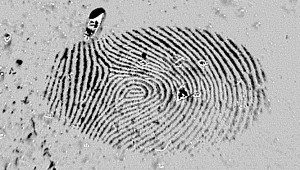
In criminal cases, physical contact between the perpetrators and the victims are quite frequent. Thus, the possibility of visualizing fingerprints on human skin would be a huge progress for criminal investigation.
Different approaches exist for the detection and examination of latent fingerprints on human skin. However, these are rarely successful.
This problem can be justified by the means of biology. The skin has a number of unique features that clearly distinguish it from other surfaces:
• The skin tissue is permanently changing: it grows, it is constantly renewed and it repels old cells
• Naturally, the elasticity of the skin instantly distorts a static fingerprint
• While regulating the body´s temperature, perspiration removes latent prints
• Exposure to various outside influences
In addition to numerous doctors and biologists, the FBI has been involved in research on methods to develop identifiable latent prints on human skin for many years. While up to the 1970s it was impossible to determine fingerprints on human skin, a variety of experimental methods found their way into forensic science. However, successful fingerprint determination was only possible at ideal laboratory conditions.
Since the early 1990s, methods like alternative light sources, iodine/silver transfer, cyanoacrylate, etc. did not provide satisfactory results. The best results were obtained with “glue fuming”. Applying this method the skin first gets vaporized with heated glue. Using metallic fingerprint powder, the fingerprints can then be determined. In essence, this method is implemented until now, although the results are rarely practically usable.
The decades of research have shown that it is theoretically possible to recognize and preserve latent fingerprints on human skin. However, with fingerprints already disappearing after a short time, this is hard be realized in real use, so that it remains extremely difficult.



